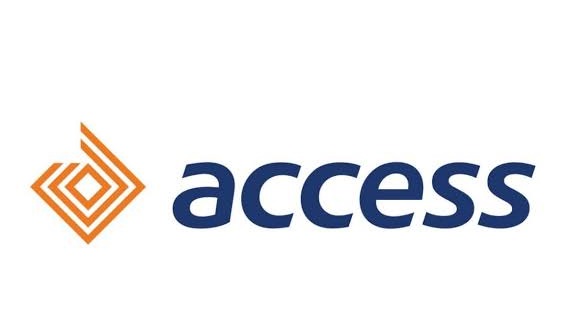- Search for topics or project materials by department. 2015/2016 Research Work 46 ARCHITECTURE 12 Accounting 158 Agriculture & Farming 21 Arts and Crafts 25 BIOCHEMISTRY 30 Bank & Finance 45 Biology 1 Business Administration 162 CHEMICAL ENGINEERING 18 Career People 18 Computer Science 0 Computer Science 244 Computer Science E-books 0 ECONOMICS 117 EDUCATION 78 ELECTRICAL ELECTRONICS 88 ENGLISH 14 ESTATE MANAGEMENT 16 Electrical Electronics 0 Food 19 Forum 0 General Topics 4 HOSPITALITY & TOURISM 123 Import & Export 10 Land Survey & Geoinformatics 68 Law 7 MARKETING 37 Marketing & Advertising 11 Mass communication 155 Masters and Doctorate 118 Mechanical Engineering books 0 Media & Publishing 6 Medical Science E-books 0 Micro Biology 4 Micro Biology 8 OTHERS 0 Oil & Gas 11 Online & Internet 36 POLITICAL SCIENCE 0 Program / Source Code 0 Programming E-books 0 Public Administration 25 Real Estate 20 Religious E-boooks 0 Retail 20 STATISTICS 17 Science Laboratory 0 Science laboratory 56 Sermons & Prophecies Ebook 0 Services 19 Small Scale Manufacturing 21 System Applications 0 Technology 30
DESIGN OF INTERLOCKING BRICKS FOR ENHANCED WALL CONSTRUCTION FLEXIBILITY, ALIGNMENT ACCURACY AND LOAD BEARING
DESIGN OF INTERLOCKING BRICKS FOR ENHANCED WALL CONSTRUCTION FLEXIBILITY, ALIGNMENT ACCURACY AND LOAD BEARING
DESIGN OF INTERLOCKING BRICKS FOR ENHANCED WALL CONSTRUCTION FLEXIBILITY, ALIGNMENT ACCURACY AND LOAD BEARING
ABSTRACT
The worldwide housing shortage has stimulated a search for appropriate, easy, fast and costeffective new ways of wall construction. Among many technologies found to have promise is mortarless technology using drystack interlocking bricks/blocks.
This thesis is about such mortarless walling technology and in particular: how to improve wallconstruction flexibility, the effects of brick irregularities on wall alignment accuracy and wall behaviour stiffness, strength when subject to lateral forces.
The flexibility of mortarless technology MT has been enhanced by the development of new bricks centrehalf bat and tee brick: the introduction of closer bricks led to the formation of two new bonds patterns namely Shokse and Lijuja bonds. It is now possible to construct more than halfbrickthick walls, to attach more than halfbrickwide piers buttresses onto walls, and, using special bricks, to construct polygonal and curved walls using interlocking bricks.
Three methods theoretical modeling, physical experiments and computer simulation were used to analyze the effects of brick imperfections on wall alignment accuracy.
Theoretical analysis confirmed that brick moulders should concentrate on achieving parallel top and bottom faces rather than achieving true squareness.
Physical column assembly compared three bricklaying strategies namely: random, reversing and replace. The columns assembled using the reversing and replace strategies realized alignment improvement factors of 1.6 and 2.9 respectively over random strategy. The research also revealed that grooving, to prevent bricks making contact near their centre lines, improved column alignment by factor 2.13 and stiffness by factor 2.0, thus allowing construction of longer and higher walls without strengthening measures.
In order to attain alignment accuracy in accordance with BS 56283:2005 in a drystack mortarless wall, this research recommends using full bricks with top and bottom surface irregularities not exceeding 0.5mm for ungrooved bricks, and upto 0.9mm for grooved bricks.
Further analysis was undertaken with respect to resourceuse implications cement, water, soil of employing MT. Using MT will save 50 of wall construction cost and 50 cement consumption, which ultimately will reduce 40 of carbon emissions.
1.2 RESEARCH JUSTIFICATION
Interlocking bricks may be made of fired clay or cementstabilized soil sand. They are usually manufactured by a process using presses rather than slopmoulds, in order to achieve greater uniformity. In Africa this would make them uncompetitive with conventional clampfired bricks, were not the latter being adversely affected by growing firewood scarcity, and the high price of the cement for the mortar.
Production and laying of ISSB are labour intensive, making use of unskilled labour. Apart from saving cost, this will create more jobs and empower youth. Moreover building with ISSB reduces the use of industrial products like cement and depends on local resources. It is considered to an environmental friendly technology, because it consumes less production energy, reduces deforestation, reduces the use of nonrenewable resources and produce less waste from construction process than the main walling alternatives fired bricks, cementsand blocks Walker, 1995.
1.3 RESEARCH METHODOLOGY
The research recorded in this thesis employed three main methods, namely:
1. Literature review
2. Survey of existing structures built of ISSB mortarless bricks and design of a more architecturally flexible form of ISSB.
3. Analysis, and experimentation;
a. Theoretical analysis of drystacking of interlocking bricks,
b. Physical testing of using halfscale interlocking bricks and
c. Computer simulation of drystacking interlocking bricks into walls and columns.
View Related Projects
IMPACT OF SCHOOL-COMMUNITY RELATIONSHIP ON SECONDARY SCHOOL ADMINISTRATION IN ZONE ‘A’
INTRODUCTION1.1Background of the study:Educational enterprise has become a costly venture, which the government ...
Continue readingEFFECTS OF MICROFINANCING ON MICRO AND SMALL ENTERPRISES IN SOUTH – WEST NIGERIA
INTRODUCTION1.1 BACKGROUND TO THE STUDYSince Nigeria attained independence in 1960, considerable efforts have be...
Continue readingIMPROVING SECURITY IN CASHLESS APPLICATION
1.1 INTRODUCTIONThe introduction of electronic banking, online transactions and mobile banking in Nigeria has paved ...
Continue reading

